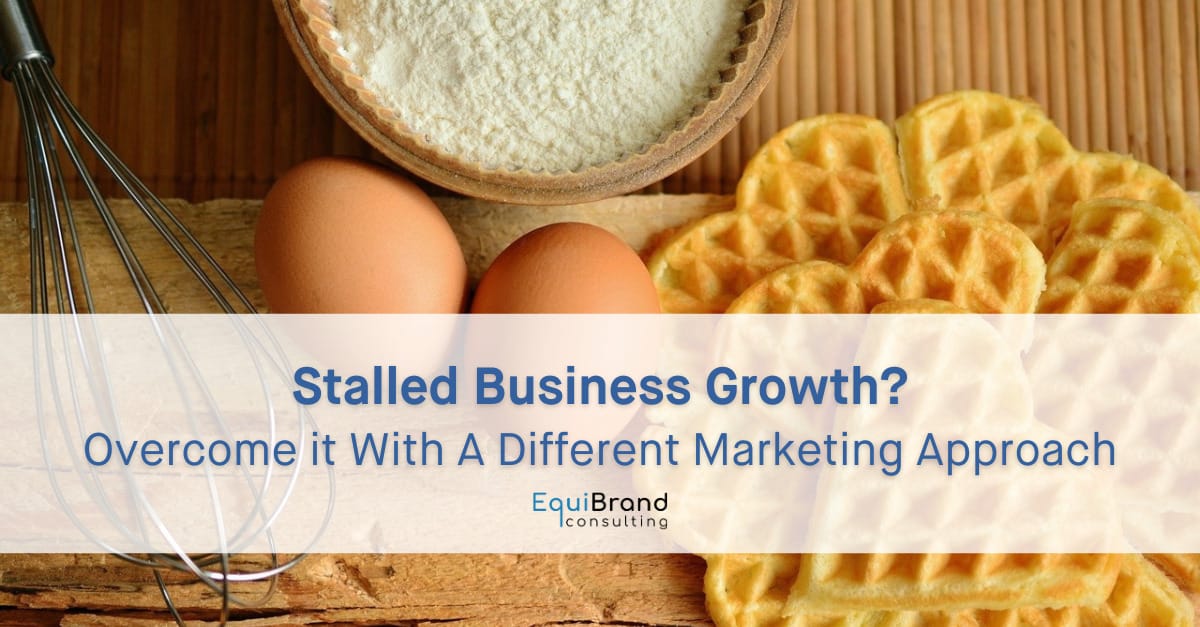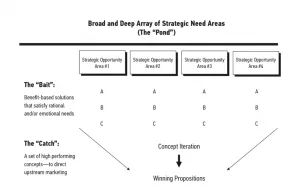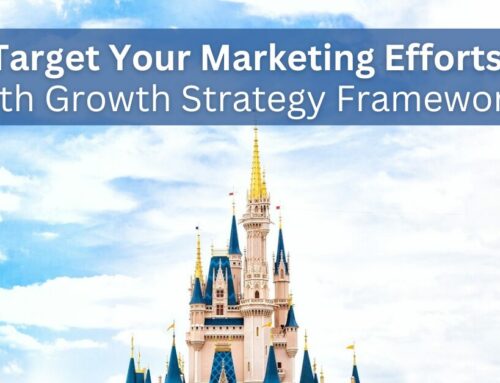By studying consumer trends and identifying customer segments, we move next to Concept Optimization REsearch (CORE) to obtain insight on new product solutions, developed using focused ideation and prototyping.
When Business Growth Stalls…
We conducted a study for a client who manufactures baking mixes for pancakes, waffles, cakes, muffins, and other products. Growth had stalled because of changes in consumer eating habits, increased competition, new product failures, and a lack of consumer insight.
Using a hypothesized demand framework (here), we were able to develop two groups of consumers who were likely to use baking mixes:
- Enthusiastic baker segment
- A slightly guilty mix user
We then moved to CORE insight, which uses concept stimuli to obtain market feedback on new products, brand positioning, and messaging ideas.
Which Ideas Are Most Relevant – and Why?
The goal is to define the end state through a create-test-and-learn approach and to develop a surplus of ideas and optimize them before investing in full development.
Examples of testable concepts used in the test-and-learn approach include:
- Written statements
- Website mock-ups
- Physical prototypes
The consumers in the study are exposed to these concepts, then we are able to narrow the list. The figure below gives an overview.
CORE Insight, a Different Approach
CORE insight differs from traditional concept development in a few key ways.
- Rather than cultivating a single area, a range of ideas is developed – from closer in to further out, into Strategic Opportunity Areas.
In this way, concept development is like adopting a venture capitalist mindset rather than a startup mentality. It uses a portfolio approach to address multiple opportunities and challenges instead of anchoring on a single idea. Consider it like multiple fishing ponds.
- The CORE approach involves developing multiple ideas within a single benefit area.
For example, the benefit of convenience or simplicity can be expressed in various ways and use tangible concepts as bait.
- Time savings
- Ease of use
- Automation
- Single-source solution
- Concept iteration replaces the traditional yes/no stage-gate approach to innovation. As ideas progress, they undergo continual refinement in moving closer to launch and learn. This is when you target – and hook the catch.
With our baking mix client, we tested a control concept along with a range of new ideas, including positioning and product ideas that went beyond “just add water” to include other ingredients.
Here’s What the Control Concept Looks Like
BRAND X. HOMEMADE MADE EASY
You don’t always have the time to make your pancakes and baked goods from scratch, but with Brand X mixes, you can still enjoy the warmth of home baking. Brand X is homemade made easy, authentic recipes brought to life with high-quality ingredients and care. Our just-add-water pancake mixes and muffins, pies, dessert bars are all homemade – but without all the time of homemade.
Over time, we changed, added, dropped, and combined concepts as a result of target feedback. As it turns out, for example, having consumers add an egg to the product mix in addition to water greatly enhanced the concept appeal with the guilty mix users group.
Validation Insight: What’s Needed to Market a New Offering?
Up to this point, we conducted exploratory insight, segmentation insight, and CORE insight phases, before moving on to validation insight.
Validation insight uses quantitative research to determine what’s required to successfully market the new offering.
As product concepts take shape, you may need to make trade-offs in finalizing the offering, pricing, and preparing to launch. For example, what product features are most appealing at which price point?
There are many statistical techniques available, and these methods begin to transition to downstream marketing as they move toward implementation.
Actual insight-gathering methods will, of course, vary by company.
Our innovative book, “Upstream Marketing,” covers the four insight-gathering methods that, when combined, inform and help answer four strategic questions:
- to whom and for what
- how to win
- how might we
- what would have to be true
If you’re ready for a fresh approach to business growth, learn more about gaining customer insight using the upstream marketing framework… Access a free full download of chapter 2 of our book “Upstream Marketing” here.





















Follow EquiBrand